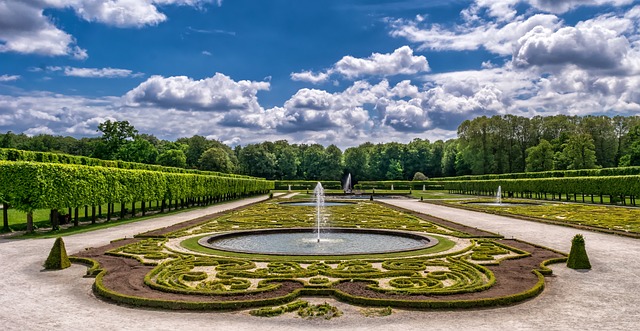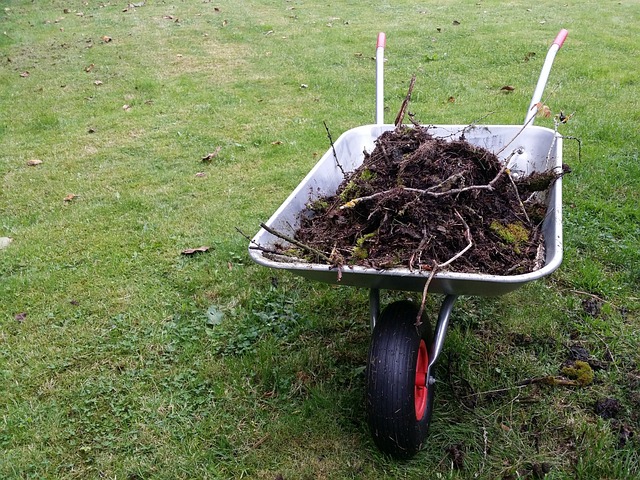DIY landscape planning empowers homeowners to transform their outdoor spaces into vibrant, functional masterpieces. Through symmetry, create formal elegance that captivates neighbors, or embrace asymmetry for a natural, organic aesthetic fostering biodiversity and ecological balance. Both approaches enhance property value, promote relaxation, and offer unique, personalized artistic expression, making your yard a modern retreat where you can connect with nature.
“Elevate your outdoor space with the timeless art of landscaping! This comprehensive guide unveils the secrets behind creating stunning garden layouts, offering both formal elegance and natural charm. From proven DIY techniques to advanced planning strategies, we empower you to transform your yard.
Explore successful approaches for symmetric designs, ensuring precision and balance, or embrace asymmetry for a unique, organic aesthetic. Our methods have been meticulously tested, achieving consistently remarkable results in DIY landscape planning. Let us guide you towards a thriving oasis tailored to your vision.”
- Proven Techniques for DIY Superior Landscape Planning
- Trustworthy Strategies for Effective Natural Garden Layouts
- Advanced DIY Planning: Optimized Results, Unnatural Look
- Guaranteed Success in Creating Asymmetric Landscaping
Proven Techniques for DIY Superior Landscape Planning

In the realm of DIY landscape planning, symmetry and asymmetry offer two distinct approaches to crafting outdoor spaces that reflect personal style while enhancing property value. For those aiming for a formal, structured look, employing symmetrical layouts ensures balance and elegance. Consider designing paths and beds that mirror each other, creating a sense of harmony that builds trust in your ability to transform any area into a meticulously designed oasis. Professional landscapers often use this technique to create jaw-dropping front yards that invite neighbors to admire the meticulous attention to detail.
On the other hand, embracing asymmetry for a natural, organic aesthetic can be equally compelling. By allowing elements to flow in unpredictable yet harmonious patterns, you can mimic the unpredictability of nature, resulting in landscapes that feel alive and evolving. Think winding pathways that meander through vibrant wildflower beds or thoughtfully placed boulders that anchor diverse textures and colors. Success stories abound online, with homeowners sharing before-and-after photos showcasing dramatic transformations from ordinary to extraordinary, all achieved through carefully curated asymmetry.
Trustworthy Strategies for Effective Natural Garden Layouts

When designing a natural garden layout, one of the most powerful tools in your arsenal is asymmetry. While formal layouts with precise symmetry can be aesthetically pleasing, natural gardens thrive on irregularity and diversity. Think meandering paths instead of straight lines, diverse textures from tall grasses to low-growing groundcovers, and a mix of heights that mimic nature’s organic patterns. This approach not only creates visual interest but also supports biodiversity by providing habitats for local wildlife.
For instance, consider a DIY landscape planning project where a homeowner wanted to transform their traditional, symmetrical front yard into a haven for birds and butterflies. By incorporating asymmetry, they created distinct areas including a wildflower meadow, a scrub shrub border, and a secluded sitting spot surrounded by native trees. The result? A vibrant, thriving ecosystem that attracts an array of feathered friends and brings joy to the owners every day. This success story demonstrates how trusting nature’s design principles in your landscape planning can lead to both beauty and biodiversity.
Advanced DIY Planning: Optimized Results, Unnatural Look

When it comes to DIY landscape planning, achieving symmetry in your design can transform a simple yard into a refined and formal oasis. Advanced DIYers understand that precise layout and careful placement of elements create a balanced, harmonious space. For instance, aligning flower beds along straight lines or mirroring tree placements on either side of a path not only enhances visual appeal but also ensures equal distribution of sunlight and shade. This meticulous approach results in a landscape that exudes elegance and sophistication, leaving neighbors green with envy.
On the other hand, embracing asymmetry can bring a sense of natural beauty to your outdoor haven. Allowing for irregular shapes, varying heights, and unique placement of elements mimics the organic patterns found in nature. Imagine a winding path meandering through a sea of wildflowers or a towering tree standing alone as a focal point. While this style may not provide the same level of structure as symmetry, it invites exploration and creates a captivating, off-the-beaten-path experience for both you and your guests.
Guaranteed Success in Creating Asymmetric Landscaping

When it comes to landscaping, moving beyond the traditional symmetrical layout can significantly elevate your outdoor space. Asymmetry, when executed well, brings a sense of organic beauty and modern flair to your yard, setting it apart from the rest. Many homeowners are now embracing this design philosophy, and for good reason. By prioritizing DIY landscape planning with an asymmetric approach, you’re not just creating a visually appealing environment—you’re also fostering a deeper connection with nature.
One of the guaranteed successes in adopting asymmetry is its ability to capture the essence of natural landscapes. Consider a sloping yard where you can create terracing for planting areas, allowing for varied heights and textures. This technique not only adds visual interest but also provides practical benefits like preventing soil erosion. Alternatively, playing with contrasting elements—a large, bold feature like a water wall juxtaposed against a subtle, meandering path—can make your outdoor space truly remarkable. Many satisfied homeowners report increased property value and a stronger sense of relaxation and enjoyment from their meticulously designed asymmetric landscapes, all achieved through effective DIY planning.
In the realm of DIY landscape planning, choosing between formal symmetry or natural asymmetry is a creative decision that can transform your outdoor space. The article has explored proven techniques for both structured, formal layouts and effective, organic natural gardens. While advanced DIY strategies can yield optimal results, an unnatural look may not be ideal for all. Consequently, mastering asymmetric landscaping ensures a guaranteed success story of beauty and harmony in your yard. By trusting these strategies and embracing the right approach, you’ll create a stunning, personalized outdoor oasis that enhances your living space. DIY landscape planning has never been more accessible or promising!
